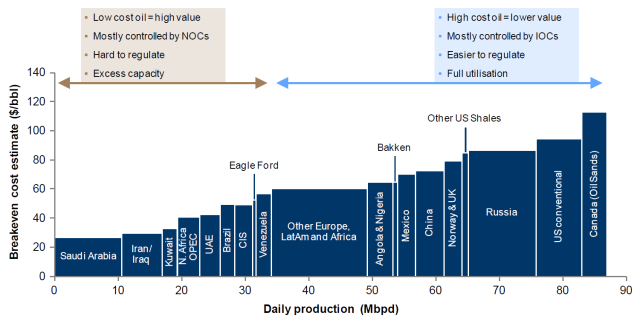When crude oil demand will peak is anyone’s guess. Forecasts vary widely. Wood Mackenzie says that peak demand is “very real,” and sees a decline of 4 million bpd between 2020 and 2035. Other majors including BP and Total SA see peak demand as coming between 2025 and 2040, as a result of clean energy government initiatives, slower economic growth, and wider use of electric vehicles.
Not everyone is that concerned with peak oil demand, however. Recently, Norway’s Energy Minister said the biggest problem for Europe’s largest oil and gas producer is satisfying near-term demand, which is growing faster than Norwegian continental shelf operators are making discoveries.
It might sound a bit weird that Europe’s greenest country is still so big on oil and gas, but in reality, there’s nothing weird: Oil and gas exports account for a substantial portion of Norway’s export revenues, with their value for 2016 standing at $43.84 billion (350 billion crowns), accounting for 47 percent of the country’s total export value.
Norway’s biggest customer is the European Union. Together with Saudi Aramco, Norway’s state major Statoil accounted for a fifth of the EU oil market last year. Yet demand in the EU is supposed to be falling, with rigorous policies designed to encourage acceleration of the shift to renewable energy.
Indeed, according to European Union statistics, demand is on a stable downward curve thanks to greater energy use efficiency, “structural changes in the economy”, and lower demand for fuels. Still, Eurostat notes, crude oil and its derivatives account for the biggest share of energy consumption in the 28-strong union.
That’s good news for Norway, and there’s more good news from Wood Mackenzie. The energy consultancy has forecast that although in places like Europe, Japan, the United States, and even China, crude oil consumption will plateau by 2035, the demand for petrochemicals will jump considerably.
…click on the above link to read the rest of the article…















 Photo credit: Mohammed Ameen / Reuters
Photo credit: Mohammed Ameen / Reuters Global crude oil and condensate (c+c) production as of June 2015. In record high territory.
Global crude oil and condensate (c+c) production as of June 2015. In record high territory. Contrary to widespread expectations, Russian production has proved more than resilient in the face of low prices. The decline in the ruble and high export taxes on oil (which are based on threshold prices) have left Russian producers in a competitive situation.
Contrary to widespread expectations, Russian production has proved more than resilient in the face of low prices. The decline in the ruble and high export taxes on oil (which are based on threshold prices) have left Russian producers in a competitive situation.
